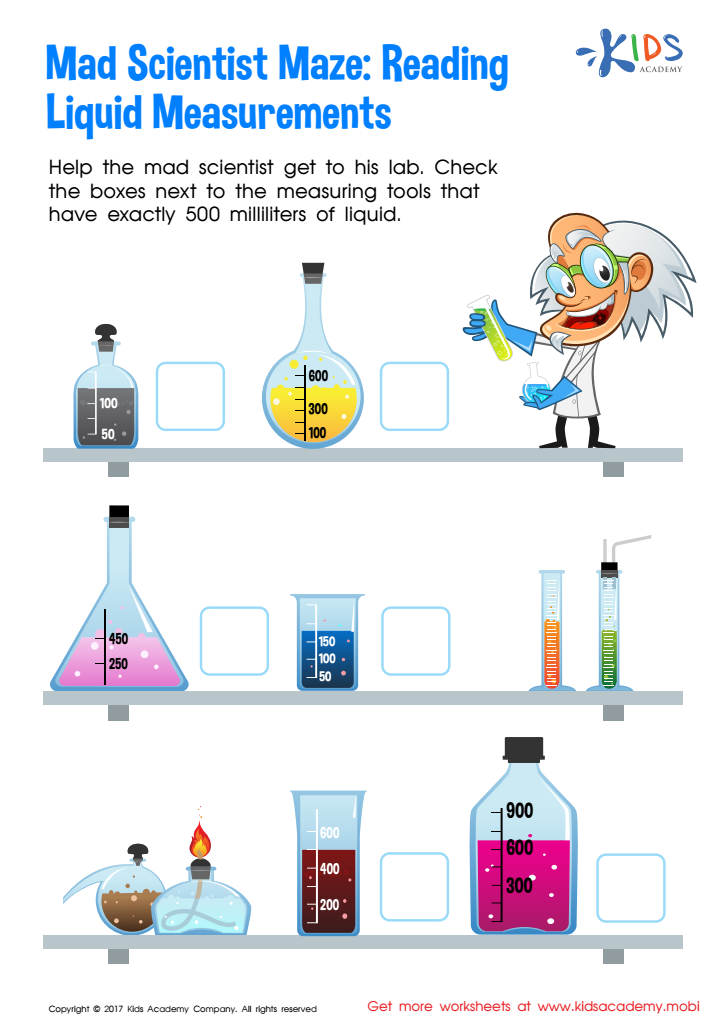Problem-Solving Skills Normal Measurement Worksheets for Ages 3-9
5 filtered results
-
From - To
Enhance your child's problem-solving skills with our engaging Normal Measurement Worksheets designed for ages 3-9. These worksheets provide a fun and interactive way for young learners to grasp essential measurement concepts through real-life scenarios. Each activity encourages critical thinking as children tackle problems related to length, weight, and volume. Our thoughtfully curated exercises foster independent learning and creativity, ensuring that your little ones develop a solid foundation in measurement while honing their analytical abilities. Perfect for at-home practice or classroom use, these worksheets promote a joyful and effective learning experience, setting your child on the path to success in math and beyond!


Reading Liquid Measurement Worksheet


Measure It Twice: Feet and Yards Worksheet


Line Plot Worksheet


Time to Catch the Train Part 1 Worksheet


Time to Catch the Train Part 2 Worksheet
Problem-solving skills are fundamental for children's cognitive development, and measuring these abilities between the ages of 3 to 9 is crucial. During these formative years, children are naturally curious and eager to explore their environment, which makes it an optimal time to cultivate and assess their problem-solving skills.
Parents and teachers should care about normal measurement in this area because these skills are linked to academic success and lifelong learning. Understanding where a child stands in their problem-solving abilities can help in identifying strengths and areas that may need additional support. Early identification of struggles can lead to timely interventions, preventing more significant challenges in the future.
Additionally, problem-solving fosters critical thinking and decision-making skills. By encouraging children to engage in problem-solving activities, parents and teachers can inspire creativity and confidence in their abilities. This encourages independence and resilience as they learn to navigate challenges.
Furthermore, statistical data on normal measurements aid educators in crafting suitable curricula, ultimately evolving teaching strategies for different learning styles. In short, monitoring problem-solving skills during ages 3-9 empowers both parents and teachers to nurture capable, confident individuals equipped to face life’s challenges.
 Assign to My Students
Assign to My Students





















